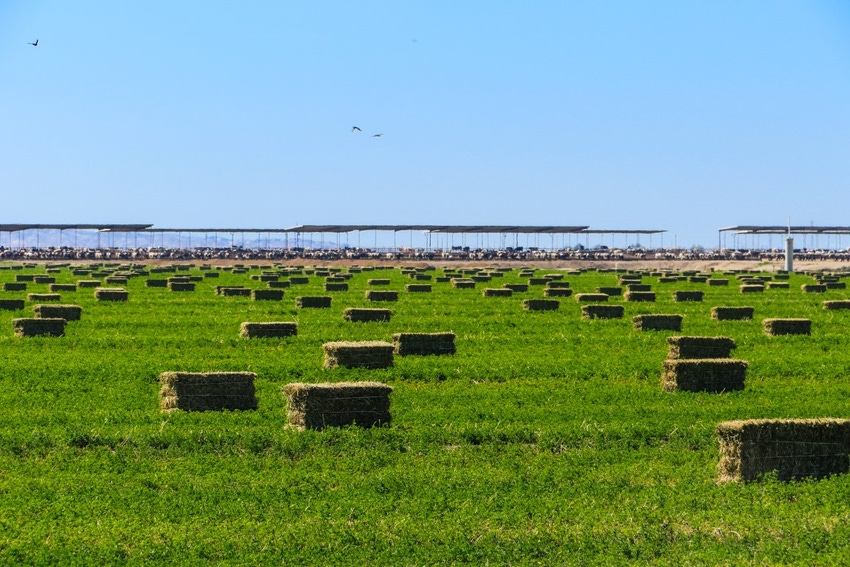
We live in a world of revolutionary technologies which continually disrupt and change our perspective. Consider the profound effect of cell phones on your daily life and the economy over the last 20 years.
In the world of alfalfa, such game-changers are few but the reduced lignin genetic trait in alfalfa may be one such technology to the potential benefit of alfalfa and dairy producers.
In the California markets in 2016, alfalfa forage quality was worth at least $80 to $100 per ton (comparing top to bottom quality categories). Forage quality may be worth $300 million to $500 million per year in the state and hundreds of millions more nationwide.
Furthermore, attempts to meet high quality requirements frequently cause growers to sacrifice yield in favor of quality - known as the ‘yield-quality trade off.’
It was a cruel market for hay producers in 2016 as growers struggled to meet high quality demands while trying to maintain high yields and profitability, the latter hard to come by.
Could genetic innovations break the yield-quality trade off?
In Fall 2014, a reduced-lignin trait, developed through genetic engineering (GE) by Forage Genetics International (FGI) in cooperation with the USDA’s Agricultural Research Service and The Samuel Roberts Noble Foundation was approved for planting by USDA regulators.
This trait named HarvXtra has been commercialized in the Fall Dormancy 4 group of varieties (common to the Midwest and Intermountain areas), and is likely to be commercialized shortly in FD 6-8 varieties in the non-dormant areas.
Meanwhile, Alforex Seeds (Dow AgroSciences) released a competing ‘low-lignin’ series of varieties named Hi-Gest developed through traditional plant breeding.
Why is it desirable to reduce alfalfa lignin content?
Lignin is an important structural fiber component of the plant, enabling it to stand up, but provides pretty much zero nutrition to the animal. Additionally, lignin can ‘tie up’ the more digestible cellulose and hemi-cellulose fibers making them less nutritious to ruminants.
Thus, the digestibility of the fiber component (NDF digestibility - NDFD) is often better with low lignin alfalfa. This is important since cell wall fiber (NDF) makes up 33 percent to 50 percent of the plant material in alfalfa.
What does data say?
At the recent California Alfalfa & Forage Symposium, Mark Sulc from Ohio State University presented data on HarvXtra and Hi-Gest alfalfa in replicated field trials from across the U.S., including Intermountain California (see link at bottom of article).
His data traced the changes in forage quality over multiple harvest timings. Sulc and colleagues came to the following conclusions:
HarvXtra-008 (FGI GE reduced lignin variety) had consistently higher fiber digestibility (NDF digestibility, +4.5 to 5.5 points and reduced lignin (-1 unit Acid Detergent Lignin) than conventional alfalfa (six-state average).
When cut on a longer cutting schedule (38 days), HarvXtra-008 yielded similarly or more, but with a similar or higher digestibility value than the conventional varieties cut more frequently (28 or 33 day, six-state average).
Hi-Gest 360 (Alforex’s low lignin variety) was not significantly different in nutritive value than a conventional check variety selected for quality (two location test).
The transgenic HarvXtra-008 reduced lignin variety maintained high nutritive value for five to 10 days longer than conventional high quality alfalfa varieties.
These data support the concept that the genetically-engineered low lignin trait is likely to improve fiber digestibility compared with conventional alfalfa varieties at the same cutting schedule. Alternatively, it would allow farmers to extend their cutting schedule to produce late-cut hay with similar quality as early-cut hay, thereby potentially increasing yields.
This trait could potentially be more important as a yield trait than as a quality trait.
Mark McCaslin, FGI president, said the company’s market research has indicated that 75 percent of the potential users of the technology are more interested in yield benefits than quality benefits (see bottom page link to video discussion).
Sulc’s data suggests this benefit may enable a five-to-10-day flexibility in harvest schedules which could increase yields and reduce costs through fewer harvests.
Comparing HarvXtra (FGI) and Hi-Gest (Alforex) varieties is important since they both promise to do the same thing. Sulc and his colleagues found HarvXtra lower in lignin than all other varieties tested, while Hi-Gest had similar lignin content to conventional high-quality varieties. Such comparisons are probably premature since Hi-Gest has not been widely tested in public trials.
It is important, however, to develop better metrics for how digestibility can be measured and how it impacts hay markets so that such traits are recognized by buyers and sellers alike. This was also addressed at the symposium by David Combs (click link below).
It could be a game-changer.
Review a full discussion of the low lignin trait, videos, PowerPoints, proceedings papers, and a lively discussion of its implications linked at http://alfalfa.ucdavis.edu.
About the Author(s)
You May Also Like




